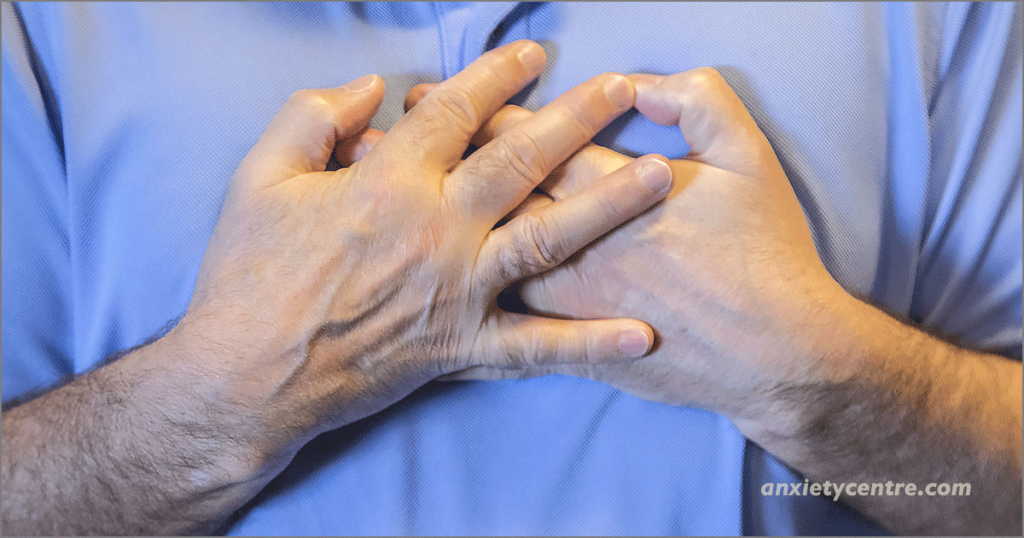

When chest tightness isn’t physical, it’s often a sign of underlying anxiety. This pervasive condition can manifest in myriad ways, and understanding how anxiety presents itself as chest tightness can be crucial in developing effective coping mechanisms. This article explores the nuances of anxiety-related chest tightness, differentiating it from physical causes, and equipping you with the tools to recognize and manage these symptoms effectively. It delves into various aspects, from understanding the physiological responses to anxiety to exploring coping strategies and seeking professional help. The structure of this article includes a comprehensive examination of the underlying causes, common misconceptions, and proven methods to help manage your anxiety-induced chest tightness.
Recognizing the Difference Between Physical and Anxiety-Related Chest Tightness
Identifying Physical Causes of Chest Tightness
Many factors can lead to chest tightness, from common colds to more serious heart conditions. It’s crucial to rule out physical causes before attributing the discomfort to anxiety. Conditions such as asthma, acid reflux, or even musculoskeletal problems can produce similar sensations. Proper medical evaluation is essential to ensure appropriate treatment.
Recognizing Anxiety-Related Chest Tightness
Anxiety can trigger a cascade of physiological responses, including chest tightness. Unlike physical causes, anxiety-induced chest tightness often occurs alongside other symptoms like rapid heartbeat, shortness of breath, sweating, and feelings of dread. Recognizing the context and accompanying symptoms is key to distinguishing between the two.
The Mind-Body Connection
Understanding the mind-body connection is critical in deciphering chest tightness. Anxiety triggers the release of stress hormones, leading to a heightened physiological response. This physiological response can manifest as various symptoms, including chest tightness and pressure.
Related Post : Understanding the Silent Triggers Behind Daily Anxiety Struggles
Differentiating Symptoms
Paying attention to the context and accompanying symptoms can help you distinguish anxiety-related chest tightness from physical causes. Note the circumstances surrounding the tightness. Does it occur during stressful events or in anticipation of stressful situations? The presence of additional symptoms such as racing heartbeat, and feelings of worry can indicate anxiety as the source.
The Importance of Professional Guidance
While recognizing patterns is beneficial, seeking professional medical guidance is paramount. Only a qualified healthcare provider can accurately diagnose the underlying cause of chest tightness and recommend appropriate treatment.
Understanding the Physiological Response to Anxiety
The Role of Stress Hormones
Anxiety activates the body’s “fight-or-flight” response, releasing stress hormones like adrenaline and cortisol. These hormones prepare the body for perceived threats, increasing heart rate, breathing rate, and blood pressure. This physiological response can manifest as chest tightness and other related symptoms.
The Impact on Breathing Patterns
Anxiety can disrupt breathing patterns, leading to shallow or rapid breathing. This can create a feeling of chest tightness and shortness of breath, exacerbating the anxiety response. Learning to control breathing techniques is vital for calming the body and mind during anxious episodes.
The Influence of Thoughts and Emotions
Our thoughts and emotions can have a significant impact on our physical sensations. Anxiety-ridden thoughts can exacerbate the physiological responses, leading to a vicious cycle of anxiety and physical discomfort. Breaking this cycle requires focusing on mindfulness and cognitive techniques to manage anxious thoughts.
Identifying Triggers
Recognizing personal triggers for anxiety can help to manage anxiety symptoms. Identifying and understanding these triggers can help you better prepare and prevent anxiety attacks.
Managing Physiological Responses
Developing healthy coping mechanisms can help control physiological responses to anxiety. Practicing relaxation techniques, such as deep breathing exercises and progressive muscle relaxation, can help reduce physical symptoms and emotional distress.
Coping Strategies for Anxiety-Related Chest Tightness
Deep Breathing Exercises
Deep breathing exercises are effective tools for calming the body and mind during anxiety episodes. Incorporating deep breathing routines can help regulate the body’s response to anxiety, easing the chest tightness and discomfort.
Mindfulness and Meditation
Mindfulness and meditation practices promote present moment awareness, allowing you to observe anxious thoughts without judgment. Mindfulness can also improve your ability to regulate emotional distress.
Progressive Muscle Relaxation
Progressive muscle relaxation techniques involve systematically tensing and relaxing different muscle groups. This process helps release physical tension associated with anxiety, reducing the feelings of chest tightness and stress.
Cognitive Behavioral Therapy (CBT)
Cognitive Behavioral Therapy (CBT) is a highly effective therapeutic approach that helps identify and modify negative thought patterns that contribute to anxiety. CBT can effectively teach individuals coping strategies that can ease anxiety symptoms.
Healthy Lifestyle Choices
Maintaining a healthy lifestyle can have a profound effect on anxiety. Regular exercise, balanced nutrition, adequate sleep, and stress management techniques can contribute significantly to overall well-being and reducing anxiety symptoms.
Seeking Professional Help for Persistent Symptoms
When to Seek Professional Guidance
If chest tightness persists or worsens, it’s essential to seek professional medical evaluation to rule out any underlying physical conditions. Professional help should be sought if symptoms severely impact daily life.
Importance of a Holistic Approach
A holistic approach to anxiety management involves addressing both the physical and emotional aspects of the condition. Mental health professionals can provide support and strategies for coping with anxiety.
Types of Therapy
Various therapies can address anxiety-related symptoms effectively. Consider exploring options such as cognitive-behavioral therapy (CBT), exposure therapy, or acceptance and commitment therapy (ACT) to create coping mechanisms and find a tailored approach.
Medication as a Complementary Tool
In some cases, medication may be a complementary aspect of a treatment plan to manage anxiety and its symptoms. It’s essential to discuss this option with a healthcare provider.
Building a Support Network
Building a support network of friends, family, or support groups can help manage anxiety. Shared experiences and encouragement can significantly reduce feelings of isolation.
Additional Tips for Managing Anxiety-Related Symptoms
Regular Exercise and Physical Activity
Regular exercise is a proven stress reliever that can effectively reduce anxiety symptoms. Physical activity helps release endorphins, which have mood-boosting effects.
Balanced Nutrition and Hydration
Proper nutrition plays a vital role in managing stress. Ensure you’re consuming a balanced diet rich in fruits, vegetables, and whole grains, while maintaining sufficient hydration levels.
Prioritizing Sleep
Adequate sleep is crucial for emotional regulation and stress management. Lack of sleep can worsen anxiety symptoms.
Mindfulness Practices
Mindfulness practices can promote emotional regulation and stress reduction. Mindfulness involves paying attention to thoughts and feelings in a non-judgmental way.
Seeking Support from Loved Ones
Sharing your feelings with trusted friends or family members can provide significant emotional support. Open communication can lessen feelings of isolation.
In conclusion, recognizing when chest tightness is rooted in anxiety rather than a physical issue is crucial for effective management. By understanding the subtle signs and symptoms of anxiety-related chest tightness, and by actively employing coping mechanisms, individuals can significantly reduce distress and improve overall well-being. Seeking professional help from a therapist or counselor can provide further support and guidance tailored to individual needs. Take the first step towards a healthier, more empowered you today by scheduling a consultation or exploring available online resources.